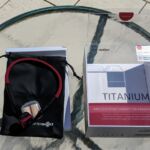

Bone-conduction headphones: Long-term test and review of AfterShokz
source link: https://arstechnica.com/gadgets/2021/07/bone-conduction-headphones-long-term-test-and-review-of-aftershokz/
Go to the source link to view the article. You can view the picture content, updated content and better typesetting reading experience. If the link is broken, please click the button below to view the snapshot at that time.
get out of my ears, charles —
Bone-conduction headphones: Long-term test and review of AfterShokz
After four months of testing, we love these for podcasts—not so much for music.
Jim Salter - 7/12/2021, 7:16 PM

In March 2021, we tested Lucyd Lyte Bluetooth sunglasses, a pair of shades with built-in off-ear headphones. Lucyd Lyte didn't quite impress—mostly because their tiny built-in speakers are nearly as audible to everyone around you as they are to you. Today, we'll take a look at two models of bone-conduction headphones suggested to us in that review's comment section—the AfterShokz Titanium and AfterShokz Air.
I purchased one each of the Titanium and Air in early March and have used them regularly in the months since. Bone-conduction headphones are definitely not for everyone—but they're fantastic for people who need the particular mix of comfort, awareness of surroundings, and improved hygiene they offer.
Open, comfortable ears
-
Aftershokz headphones disappear pretty effectively on most users' heads—despite hair ranging from quite short (pictured) to outright crew cut (current), my family rarely notices when mine are on.
-
In this close-up, you can see the large "multifunction button" on the outside of the left earpiece.
-
The volume buttons, power button, and sealed charging port are on the underside of the little black box behind my right ear in this pic.
-
Under the small box behind the right ear, we can see the sealed charging port (right), power/volume-up button (middle), and volume-down button (left).
The big draw for the Titanium and the Air is that they go neither in nor on your ears. They're worn something like backward sunglasses, with a loop fitting over the top of each ear and a small band wrapping around behind the head. If you suffer from near-terminal ear sweatiness with conventional earbuds and/or headphones, this is a big comfort and hygiene win.
AfterShokz's bone-conduction design is also a significant functional improvement for people who need to keep paying attention to their surroundings. With unobstructed ears, it's much easier to converse with those around you, notice important traffic cues while jogging or riding a bicycle, and so forth.
On the flip side, ambient noise can, of course, distract you from your content. This is less of a problem than you might think—something about the bone conduction "centers" the sound perceptually, and it was generally very easy to distinguish between ambient audio and content, with little difficulty ignoring the former and concentrating on the latter.
If you need to block out the outside world, both models of AfterShokz ship with foam earplugs—but that diminishes or completely cancels the value-add of the headphones' open-ear design. For just diminishing the occasional loud intrusion—an unmuffled truck driving by, a barking dog, or an unusually loud nearby conversation—lightly pressing a fingertip over the ear closest to the annoyance was sufficient.
AdvertisementMediocre audio
Unfortunately, neither AfterShokz model holds a candle to conventional earbuds and headphones when it comes to music. The AfterShokz headphones get loud enough to groove to, and the audio is perfectly clear—but the bass response is extremely limited, and the overall impression that full-range music delivers on an AfterShokz is undeniably flat and unimpressive.
Fortunately, the headphones' audio profile is perfectly suited to reproducing normal human speech—so podcasts, telephone calls, audiobooks, and voice navigation all sound great on either model. Distinguishing between content and ambient noise is easier than you might expect because the bone-conduction transmission makes audio playback feel centered "inside" your head.
The mic quality on both models is excellent. In my testing, calls picked up almost no ambient noise—significantly less than our Pixel 2XL's built-in mic does.
Solid battery life

AfterShokz lists "six hours of continuous music + calls on a single charge" for the Air and Titanium models alike. I easily exceeded that in my testing, with the charge level going down about 10 percent per hour while listening to podcast after podcast on long car trips.
Standby time is also good—AfterShokz claims up to 20 days of standby time, which again seems a bit conservative. After leaving a Titanium headset off the charger for a week, it still registered 90 percent charge. A fully discharged headset requires a bit less than two hours to completely charge.
Much like the audio, this isn't even close to "best quality" or even "best value"—the same $40 Skullcandy wireless earbuds we mentioned earlier offer 24 hours per charge. But the AfterShokz models are easily good enough for most use cases.
Controls
The Air and Titanium share the same controls—a large "multifunction button" on the side of the left earpiece and power/volume-up and volume-down buttons beneath the right earpiece. The charging port is sealed beneath a soft rubber flap just behind the volume-change buttons.
Single-pressing the multifunction button pauses or resumes audio playback, answers or ends a call, or answers call-waiting and puts the current caller on hold as appropriate. Double-pressing the button skips to the next song or skips ahead 30 seconds in a podcast or audiobook, and long-pressing it for two seconds rejects calls, begins voice dialing, or answers call waiting and hangs up on the current caller.
Long-pressing the power/volume-up button for two seconds turns both models on or off; long-pressing it for five seconds enables Bluetooth-pairing mode. Pressing both volume buttons at once mutes the mic if on a call or changes the equalization profile (between open-air and earplugs-in profiles) if listening to music.
Air vs. Titanium
-
We bought both Air and Titanium models for testing. In this shot, the Titanium is on the left and Air is on the right.
-
Unboxing the Titanium, we see a large bag, the Titanium headset itself, and a pair of included foam earplugs. The printed user manual is in the bag. The Air has the same included gear in a slightly fancier package.
There are two models of AfterShokz bone-conduction headphones—the Titanium and Air. The Air is the newer, upgraded model—but it's not much of an upgrade, and some people may actually prefer the older, cheaper Titanium, as I do.
AdvertisementThe Air and Titanium both offer the exact same audio quality and battery life in my extensive testing. The major difference between the models is a thinner, lighter band on the Air that some users prefer. Also, the beep when adjusting the volume is significantly louder on the newer Air model—enough so that I found it a bit painful.
Although the Air does feel perceptibly lighter than the Titanium, it felt less adjustable. When wearing either of the headphones for longer than two or three hours continuously, some users will want to occasionally shift the pressure point of the headset to minimize irritation. I found a greater range of positions in which the Titanium could be successfully used, which in turn made it a better choice for long-term comfort than the Air model. Paired with the quieter volume adjustment beep, that made the Titanium the better choice for me.
Of course, different users will have different opinions—I originally bought one Titanium and one Air, and my wife and daughter (who eventually purchased her own) preferred the Air.
Conclusions
If you don't strongly dislike conventional earbuds or headphones, it's hard to make a case for either the Air or the Titanium—they cost more, have less battery life, and don't offer a full musical range of audio reproduction. But they're outstanding for audio tasks centered on a relatively normal human speaking range, and their battery life is good enough for even heavy daily use.
Most importantly, they stay out of your ears completely—which is the big feature that drove me to buy them on an experimental basis in the first place. AfterShokz headphones don't leave you with sore or sweaty ears after hours of continuous use. The comfort factor isn't perfect—I find myself wanting to wiggle the headphones around a little after three or more hours—but it's a definite improvement.
AfterShokz's bone-conduction technology doesn't interfere with normal hearing at all, making these the polar opposite of noise-canceling headsets. With AfterShokz headphones in, you'll hear every conversation, car driving by, or kid-mischief taking place around you. I don't feel safe bicycling with earbuds in, but both models are great for combining a bike commute with the latest episode of a favorite podcast or serially published audiobook.
The Air and the Titanium are also helpful with home school craziness—my wife can listen for questions and/or shenanigans from kids while podcasting, audiobooking, or taking calls, and my daughter finds them significantly better for class interviews and required multimedia consumption than the traditional headsets all three kids already had.
The Good
- Hear everything going on in the world around you while audio is playing
- Excellent reproduction of human speech
- Excellent separation of speech and ambient noise in the onboard mic
- Easy pause, resumption, and time-skip of content with large button on left side
- Nobody else can hear your AfterShokz audio—even at very high volumes
- Adjust volume, pause, skip forward, mute, answer, disconnect using physical buttons on the headset
- No sweaty/uncomfortable ears after hours of use
The Bad
- Hear everything going on in the world around you while audio is playing
- Mediocre-at-best musical reproduction
- Less battery life than most modern wireless headphones offer
- No on-the-headset "rewind / skip back" button
The Ugly
- A bit on the pricy side ($80 for the Titanium, $120 for the Air)
Recommend
About Joyk
Aggregate valuable and interesting links.
Joyk means Joy of geeK

